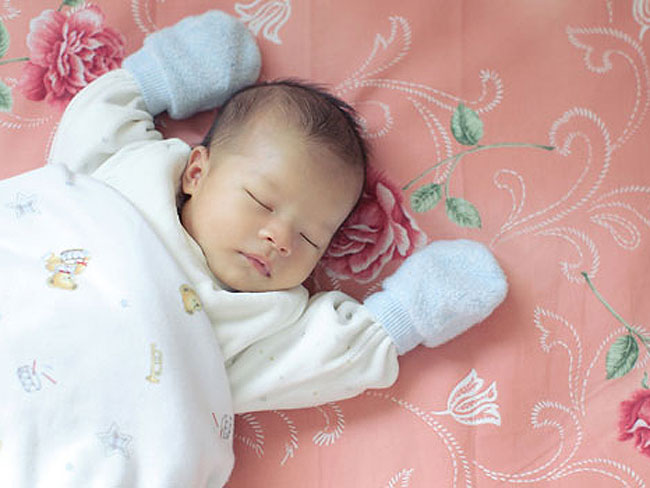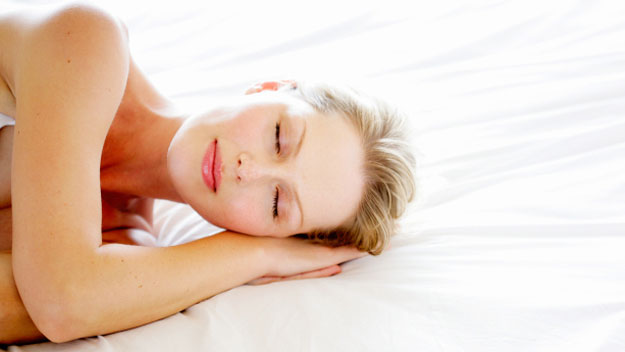Struggling with sleep is never pleasant, but if you’re constantly waking up tired you could be among the one in 50 Australian women with sleep apnoea, which causes repeated pauses in breathing.
“While women are less likely than men to suffer from sleep apnoea, your risk triples after menopause,” sleep expert Dr Carmel Harrington says. “But it’s largely undiagnosed then because many symptoms – waking in the night, for instance – are linked with menopause.”
What is sleep apnoea, anyway?
If your partner has mentioned you snore loudly or wake up gasping, your breathing may be affected by sleep apnoea.
“It’s a serious sleep disorder that occurs when the walls of your throat come together during sleep, blocking off your airway and restricting airflow,” Dr Harrington says. Pauses in breathing typically last anywhere between 10 to 40 seconds.
“While it’s normal to have some brief pauses in breathing during sleep, if it’s happening more than five times an hour, it should be investigated,” she explains.
What are the signs of sleep apnoea?
While sleep apnoea symptoms vary, ear, nose and throat surgeon Dr David McIntosh says you don’t have to be a snorer or feel unwell to be affected. Other signs include poor concentration, going to the toilet more often overnight and morning headaches. Untreated sleep apnoea can also make it difficult to manage other health issues.
“People with severe sleep apnoea are more likely to develop high blood pressure, and may have an increased risk of heart attack and stroke as each time you stop breathing it puts strain on your heart and blood vessels,” Dr McIntosh says.
There’s evidence the condition can increase your risk of diabetes, anxiety and depression, too. “There’s often a sense of relief to finally get a diagnosis,” Dr McIntosh adds.

How to reduce your risk of sleep apnoea
Even though you can’t prevent sleep apnoea, you can reduce your risk of snoring, which may contribute to the condition, by not smoking, limiting your alcohol intake and maintaining a healthy weight.
“Excess weight puts added strain on your airway when you lie down,” Dr Harrington says.
“Other contributing factors can include nasal congestion and obstruction, enlarged tonsils, reflux disease and facial bone shape, as well as certain illnesses, such as an underactive thyroid or the presence of a large goitre.”
Certain sleeping positions can be problematic as well.
“When you sleep on your back, there’s more weight pushing down on your neck, especially if you’re overweight,” Dr Harrington says. “Try sleeping in a semi-upright position on your side. Alternatively, try putting a tennis ball in the back of your pyjamas to stop you from rolling over.”
Another way to minimise sleep apnoea is to practise healthy bedtime habits. Go to bed at the same time each night, don’t eat dinner too late and avoid caffeine at least four hours before going to bed.
When to see a doctor
If your snoring worsens, breathlessness wakes you up, or daytime lethargy leaves you feeling like a zombie, make an appointment to talk to your GP.
“We’re supposed to rest enough so we wake up feeling as though we can meet the joys and challenges of the day, and if that’s not happening there’s a problem,” Dr Harrington says.
While various at-home tests are available, the most accurate way of definitively diagnosing sleep apnoea is by participating in an overnight sleep study.
“This involves going into hospital or a sleep clinic and being hooked up to a machine which measures your breathing, heart rate, muscle tone and eye movement, in an effort to see which sleep state you’re in and what’s happening to you as a result,” she says. Ask your doctor for more information.
Snoring vs sleep apnoea
Snoring is caused by the vibration of tissues in the airway, which is mostly a nuisance for those around you. “Sleep apnoea involves a partial or complete physical blockage of the airway, which
can occur with or without snoring,” Dr Harrington says. Snoring is not dangerous, but sleep apnoea means you’re not breathing properly while you’re asleep.
Treatment options for sleep apnoea
“The most appropriate treatment method will depend on the severity of your symptoms, but Continuous Positive Airway Pressure (CPAP) is regarded as the gold standard treatment,” she adds.
This involves wearing a mask at night to prevent your airway from closing up while you’re sleeping. It’s also worth talking to your dentist about it. “Some people are suitable for a special type of mouthguard, which works by holding your jaw forward while you sleep,” Dr McIntosh says.
Both devices are particularly useful for mild-to-moderate sleep apnoea but surgery may be required for more severe cases. “Surgery is only indicated when there’s an abnormality in the upper airway, such as nasal polyps, or if you have a deviated septum,” Dr Harrington says. “It can also be useful for people with receding chins, where an implant can force the chin forward and open up the airway.”
Laser therapy to correct the soft palate is no longer recommended.
“While it diminished the sound, many people found they still had sleep apnoea,” Dr McIntosh says. “And in some cases, it worsened symptoms. Now most specialists wouldn’t advocate laser therapy to the throat at all.”
What’s a CPAP machine?
A CPAP machine uses an air pump to deliver pressurised air to your upper airway through a mask that’s fitted over your nose, or nose and mouth.
“The constant pressure ensures that your airway remains open, allowing you to breathe normally while sleeping,” Dr Harrington says.
While the mechanical noise of the device can take some getting used to, Dr Harrington says it’s usually quieter than snoring! Your GP can refer you to a sleep specialist for assessment and
a prescription to take to a supplier.
Dr McIntosh says the success or failure of using a CPAP machine depends on your compliance.
“For treatment to be effective, the mask needs to be worn every night all night long, but it doesn’t work as well if you have a blocked nose,” he says.
A CPAP machine costs up to $2000 (there are rental options, too), plus you’ll need a mask, ranging in price from $150 to $300. Financial assistance may be available to help cover the costs of running the device.
Find out more by visiting humanservices.gov.au or asking your doctor.
-(1).jpg)

